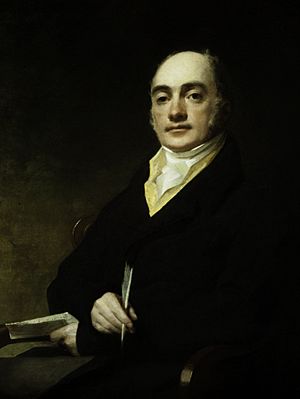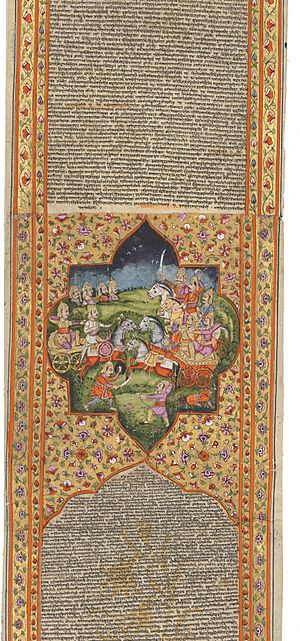John Baillie of Leys facts for kids
Colonel John Baillie (born May 10, 1772 – died April 20, 1833) was an important figure in the East India Company. This company was a powerful British trading company that also ruled parts of India. John Baillie was very good at languages. He even became a professor at Fort William College in Calcutta, India, which was a famous school. Later, he worked as a special representative for the British in the Indian city of Lucknow. When he returned to the United Kingdom, he became a Member of Parliament (MP), helping to make laws for the country. He also became a director of the East India Company.
Contents
John Baillie's Early Life and Career
John Baillie was born in Inverness, Scotland, on May 10, 1772. He was the younger son of George Baillie and his wife, Anne. In 1790, John Baillie joined the East India Company's army. He arrived in India in 1791.
Learning Languages and Teaching
By 1793, he became an ensign, a junior officer. A year later, he was promoted to lieutenant. John Baillie spent his free time studying languages from the Middle East and Asia. He was so good at it that in 1801, he became a professor. He taught Arabic, Persian, and Islamic law at the new Fort William College in Calcutta, India.
Working as a Political Agent
In 1803, a war broke out between the British and the Maratha Empire in India. John Baillie, now a captain, joined the siege of Agra. Soon after, he got a difficult job as a Political Agent in a region called Bundelkhand. This area was very troubled, and local leaders were forming dangerous groups.
Captain Baillie managed to break up these groups. He brought back order and safety to the region. For his excellent work, the governor-general publicly thanked him. The governor-general said that British control in Bundelkhand was saved by Baillie's courage, skill, and influence. Thanks to him, the East India Company gained control of land that brought in a lot of money.
Becoming a Resident and Lieutenant-Colonel
In 1807, John Baillie left his teaching job. He took on the role of Resident in the Indian city of Lucknow. A Resident was a British official who represented the East India Company in an Indian state. He held this important position until 1815. In that same year, he was promoted to Lieutenant-Colonel in the 4th Native Infantry.
Return to the United Kingdom and Parliament
John Baillie returned to the United Kingdom in 1816. He managed his family's lands in Inverness-shire, Scotland. He also became a Member of Parliament (MP), which meant he helped make laws for Britain. He was elected to Parliament for different areas:
- Hedon (1820–1830)
- Inverness Burghs (1830–1831)
- Again for Inverness Burghs (1832 until his death in 1833)
In 1817, he was chosen as a Fellow of the Royal Society, a group of important scientists and thinkers. In 1823, he also became a director of the East India Company. This allowed him to use his influence in Parliament to support the company's interests.
John Baillie's Writings and Collections
While he was a professor, John Baillie wrote several books to help people learn Arabic:
- Sixty Tables elucidatory of a Course of Lectures on Arabic Grammar delivered in the College of Fort William during the first year of its institution (published in 1801). This book had tables to explain Arabic grammar.
- The Five Books upon Arabic Grammar (published in 1802–1803). These books were about Arabic grammar rules.
Baillie also started translating a part of Islamic law from Arabic in 1797. He did this for Sir John Shore, who was the governor-general at the time. However, this translation was never finished.
His job as Resident in Lucknow allowed him to collect many old manuscripts. These are handwritten books or documents. Many of these valuable manuscripts were later given to the Edinburgh University Library in 1876. They include beautiful paintings and illustrated books, such as the Jami al-Tawarikh (a history book), poems by Hafiz, and the Mahabharata (a famous Indian epic).



